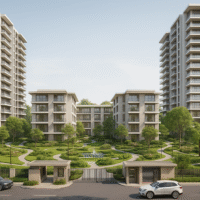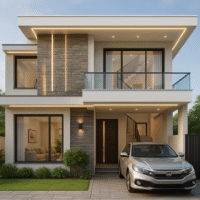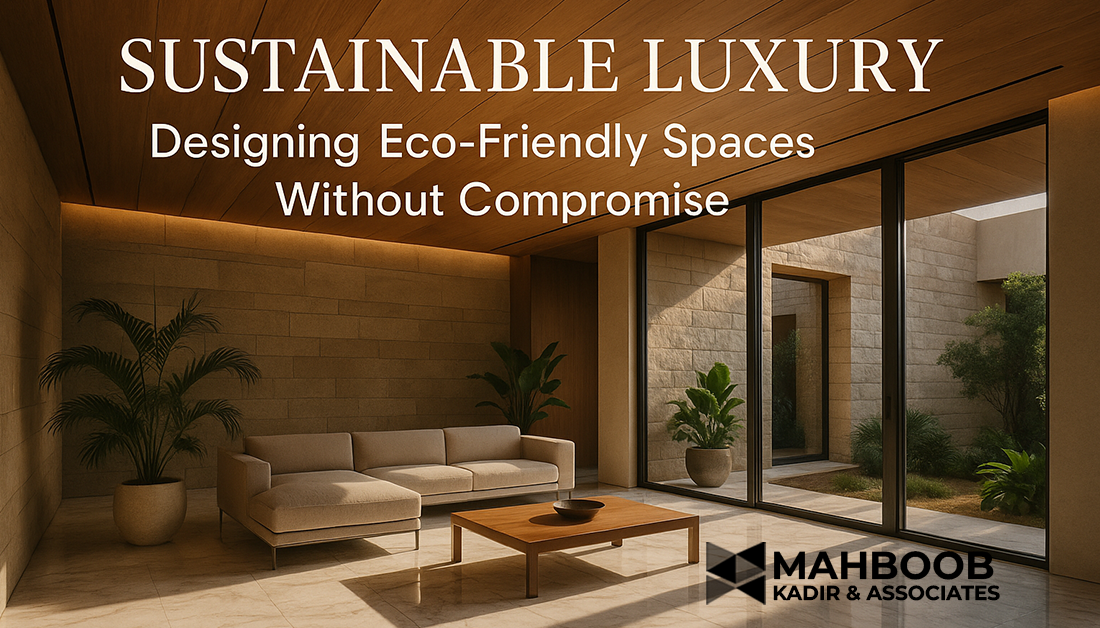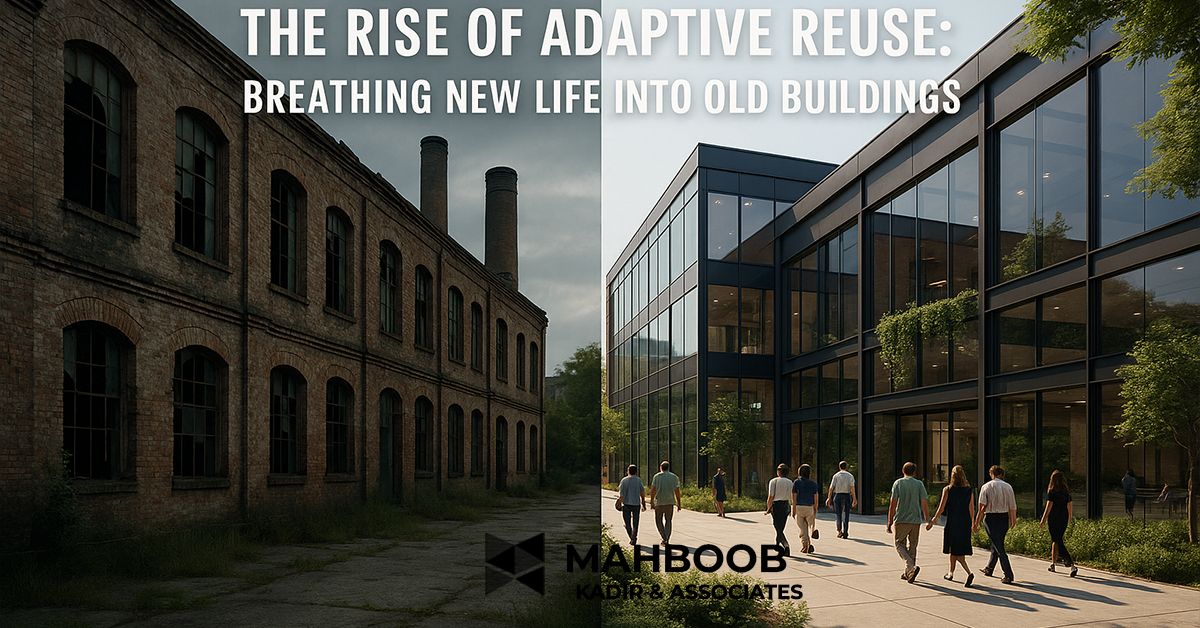Top 10 Architectural Trends to Watch in 2025
2025
Architecture has always reflected society’s evolving needs, aspirations, and technological progress. As we move deeper into the 21st century, 2025 is shaping up to be a transformative year for the built environment. Architects, designers, and planners are rethinking how we live, work, and interact with our surroundings. Whether you’re an industry professional or simply passionate about the future of urban living, here are the top 10 architectural trends to watch in 2025.
Smart Cities and Intelligent Infrastructure
Smart cities are no longer a futuristic idea; they are becoming a present reality. In 2025, architecture will increasingly integrate IoT (Internet of Things) and AI-driven technologies to manage everything from energy consumption and water usage to traffic flow and waste management. Architects are now designing buildings that “talk” to each other and to city grids, promoting efficiency, safety, and sustainability.
Key Features:
Integrated smart sensors in buildings
Real-time traffic and pedestrian flow design
Responsive lighting and HVAC systems
Urban planning based on data analytics
Parametric and Algorithm-Driven Design
Parametric architecture, which uses algorithms and computational techniques to define forms and spaces, is gaining momentum in 2025. These digital design tools allow architects to explore complex geometries and respond to environmental inputs, site constraints, and material efficiencies.
Key Benefits:
Enhanced structural performance
Aesthetic uniqueness
Design flexibility
Faster prototyping and visualization
Parametric design is being used not only for show-stopping landmarks but also in residential, commercial, and institutional buildings, offering both function and flair.
Sustainable and Regenerative Design
Sustainability continues to dominate architectural thinking, but in 2025, the conversation is shifting from “less harm” to “net positive.” Regenerative architecture aims to restore and enhance natural ecosystems rather than merely reduce environmental impact.
Emerging Strategies:
Net-zero energy and carbon-positive buildings
Use of recycled and bio-based materials
Water harvesting and natural filtration systems
Urban reforestation through green roofs and vertical gardens
This shift reflects a growing responsibility among architects to combat climate change and promote long-term ecological balance.
AI in Architectural Design and Construction
Artificial Intelligence is transforming how buildings are designed, engineered, and constructed. In 2025, AI is not just a design assistant—it plays a pivotal role throughout the architectural lifecycle.
Applications:
AI-generated design suggestions based on site data
Predictive maintenance and building health monitoring
Robotics in construction for increased speed and precision
Automating compliance and code-checking processes
AI is allowing architects to focus on creativity while ensuring safety, compliance, and performance optimization.
Modular and Prefabricated Construction
Speed, cost, and sustainability are driving the adoption of modular and prefab architecture. In 2025, these construction techniques are no longer limited to temporary or low-cost housing—they are being used in everything from luxury homes to office towers.
Advantages:
Reduced construction time
Less material waste
Higher quality control
Scalability and transportability
Advances in BIM (Building Information Modeling) and digital fabrication are making modular architecture more precise and adaptable than ever.
Adaptive Reuse and Heritage Preservation
As cities grow denser, preserving cultural heritage and repurposing old buildings are more important than ever. 2025 sees a renewed focus on adaptive reuse—transforming existing structures for new purposes without erasing their history.
Notable Trends:
Converting factories into co-living spaces
Renovating historic landmarks with modern interiors
Blending old and new architectural languages
Adaptive reuse is both a sustainable and culturally sensitive response to urban growth, allowing cities to honor their past while embracing the future.
Biophilic Design and Wellness Architecture
The pandemic emphasized the importance of health, wellness, and connection to nature. Biophilic design, which incorporates natural elements into built environments, is more popular than ever in 2025.
Core Concepts:
Use of natural light and ventilation
Integration of plants, water features, and natural materials
Design for mental health and stress reduction
From hospitals to homes, architects are creating spaces that support human well-being through thoughtful, nature-inspired design.
Vertical Living and Compact Urbanism
As urban land becomes scarcer, vertical living is becoming the new norm. In 2025, architects are exploring innovative high-rise typologies that blend residential, commercial, and recreational spaces within a single footprint.
Innovations Include:
Vertical farms and sky gardens
Multi-use towers with shared amenities
Smart elevators and vertical transportation systems
This trend addresses the need for density while enhancing quality of life and community interaction.
Climate-Resilient Design
Climate change is a driving force in architectural thinking. In 2025, buildings are being designed not just to reduce their environmental footprint, but to withstand environmental challenges.
Key Responses:
Flood-resistant structures and elevated foundations
Wind-resistant shapes and aerodynamic forms
Passive cooling for extreme heat zones
Material selection based on local climate hazards
Designing for resilience ensures long-term safety, usability, and adaptability in a rapidly changing world.
Immersive Visualization and Virtual Design Tools
Technology continues to blur the line between digital and physical. In 2025, VR, AR, and real-time rendering are standard tools for architects and clients alike.
Current Uses:
Virtual walkthroughs during early concept stages
AR overlays on construction sites for error reduction
Real-time design tweaks using cloud platforms
These tools are not only improving collaboration and communication but also making the design process more interactive and client-centric.
Final Thoughts
The architectural trends of 2025 highlight an industry in the midst of profound change—technologically advanced, environmentally responsible, and deeply human-centered. Architects today are expected to be not just designers, but problem-solvers, futurists, and stewards of the built environment.
As we move forward, embracing these trends will not only lead to smarter, greener, and more beautiful buildings—it will shape a better world for generations to come.
Written by: Mahboob KadirPublished by: MK & Associates | mkandassociates.com
Want to discuss how your next project can embrace the future of architecture? Contact us today for a consultation.






